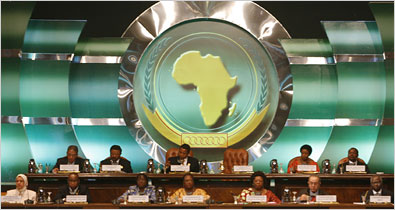Tripartite FTA: Answer to poor intra-African trade

Southern Times | 20140328
Tripartite FTA: Answer to poor intra-African trade
by Phillip Shingirai
Windhoek — African countries need to look at the possibility of fast-tracking the implementation of the tripartite Free Trade Area if hopes of an improved intra-African trade are to be met anytime soon.
Last week the African Union Commission brought the idea of a tripartite FTA in Africa closer by pushing for it to be achieved by 2017.
In addition, the AU Commission last week adopted the drawing of a road-map on implementation of the proposed FTA and a detailed plan of action to fast track the proposed issue.
The AU Commission argues that fast tracking the idea of a bigger FTA encompassing all trading blocs on the continent could boost intra-Africa trade significantly in the next few years.
The proposed African FTA, which has been deliberated for the past three years, will see the free movement of goods and people within the various trading blocs on the African continent.
Currently, Africa has the following trading blocs, the Southern African Development Community (SADC), the Economic Community of West African States (ECOWAS), the East African Community (EAC), Inter-Governmental Authority for Development, the Common Market for East and Southern Africa, Arab Maghreb Union (North Africa) and Economic Community of Sahelo-Saharian States.
Why FTA
According to the AU Commission, Africa needs an FTA to stimulate intra-African trade, which is currently around 10 percent. The AU Commission argues that intra Africa trade is significantly lower than the level of intra-regional trade of other developing regions.
“Two thirds of African countries are either more protectionist than Africa in general or face more limiting market access conditions. The FTA, even one that progressively eliminates barriers, can offer substantial economic and social gains in Africa,” AU noted in their proposed draft for the FTA roadmap.
The AU Commission also noted that Intra African trade in agriculture faces a higher rate of protection than the non-agricultural sectors.
“Almost all African countries/sub-regions impose higher tariffs on agriculture imports from other African countries. The FTA provides the opportunity for Africa to maintain food security and boosting trade in agricultural products. For some African countries, trade within the region constitutes a significant share of their exports,” the AU Commission noted
Why Africa needs the CFTA?
The African continent needs to stimulate economic growth and also foster preferential trade among member states, as compared to the current situation where most African states do not trade among each other.
Research has so far shown that it is actually costly for African countries to trade among themselves because of high tariffs and poor transport infrastructure, which makes it difficult to ship goods across the continent.
The potential benefits of the FTA
The establishment of a continental FTA will lead to a significant growth of intra-Africa trade and assist Africa to use trade more effectively as an engine of growth and sustainable development.
According to the AU Commission between 2000 and 2010, the creation of the COMESA FTA led to a six-fold increase in intra-COMESA trade.
“The realisation of the Tripartite FTA is expected to lead to further growth of intra-African trade while the continental FTA will build on these existing successes and enable Africa to participate in global trade as an effective and respected partner.”
The FTA will also result in “increased food security through reduction of the rate of protection on trade in agricultural produce among African countries; increased competitiveness of Africa’s industrial products through harnessing the economies of scale of a large continental market of about one billion people; increased rate of diversification and transformation of Africa’s economy and the continent’s ability to supply its import needs from its own resources; are among the major benefits”, the AU Commission noted.
According to the AU Commission improved allocation of resources, improved competition and reduced price differentials among African countries could be achieved through the creation of a tripartite FTA by 2017.
There will also be “growth of intra-industry trade and the development of geographically based specialisation in Africa; reduced vulnerability of Africa to external trade shocks; enhanced participation of Africa in global trade and reduced dependence of the continent on aid and external borrowing will be achieved”.
Leadership Support
In as much as it will not be an easy feat to achieve the African FTA because of the complications associated with the trading blocs on the continent, African leaders are already for the idea.
Last week President Hifikepunye Pohamba of Namibia and his Nigerian counterpart Goodluck Jonathan admitted during their addresses at the independence celebrations that intra-Africa trade needed to be boosted.
Although Nigeria and Namibia are closely linked since the days of the Southern African country’s liberation struggle, they are among African countries who have failed to engage in meaningful trade because of trade barriers.
The two leaders concurred that African countries need to engage more often to improve trade co-operation.





